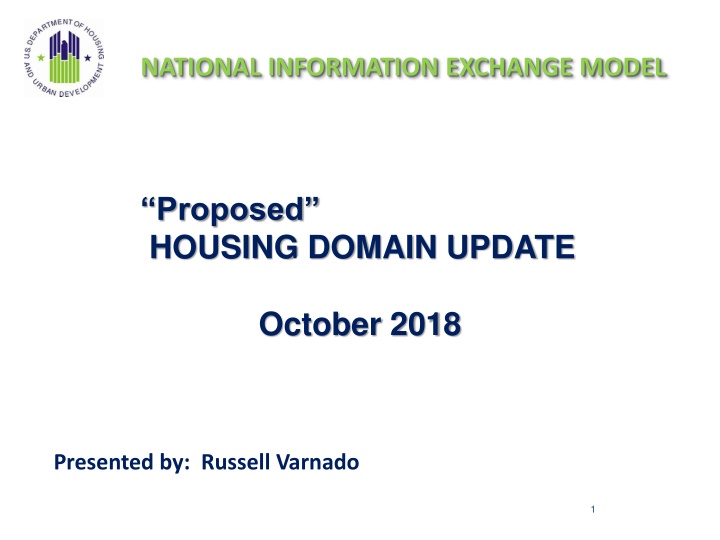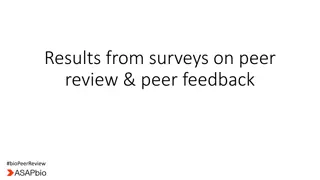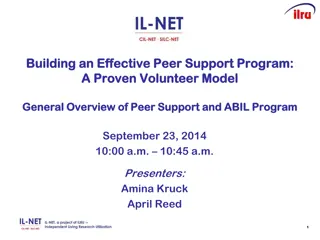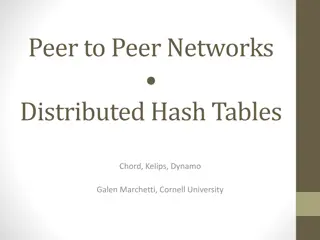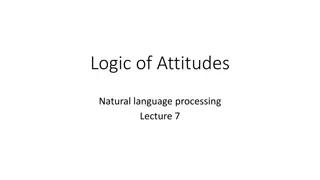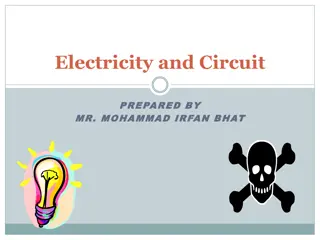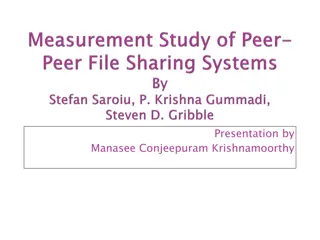Attitudes, Preferences, and Intentions in Peer Electricity Trading
This study explores attitudes, preferences, and intentions of Southwest German households to participate in peer-to-peer electricity trading. It investigates the motivation, research goals, prior research, data and methodology, results, and conclusions of the research conducted by Andr Hackbarth and Sabine Lübbe from Reutlingen Energy Center. The study examines the status quo of renewable electricity, governmental support, market development, and perspectives for innovation in energy trading. Consumer research on peer-to-peer electricity trading is still limited, making this study valuable in understanding the dynamics in this emerging field.
Download Presentation

Please find below an Image/Link to download the presentation.
The content on the website is provided AS IS for your information and personal use only. It may not be sold, licensed, or shared on other websites without obtaining consent from the author.If you encounter any issues during the download, it is possible that the publisher has removed the file from their server.
You are allowed to download the files provided on this website for personal or commercial use, subject to the condition that they are used lawfully. All files are the property of their respective owners.
The content on the website is provided AS IS for your information and personal use only. It may not be sold, licensed, or shared on other websites without obtaining consent from the author.
E N D
Presentation Transcript
NATIONAL INFORMATION EXCHANGE MODEL Proposed HOUSING DOMAIN UPDATE October 2018 Presented by: Russell Varnado 1
ADOPTION AND USE OF THE NATIONAL INFORMATION EXCHANGE MODEL (NIEM) In Fiscal Year (FY) 2010, the Office of Management and Budget (OMB) provided guidance to all Federal Agencies to evaluate the adoption and use of NIEM as the basis for developing reference information exchanges to support specification and implementation of reusable cross- boundary services. (Office of Management and Budget (OMB) 25 Point Implementation Plan to Reform Federal Information Technology Management, Dec 9, 2010) Alert Interactive Voice Response System (CAIVRS) contains data exchanges with many agencies, and is used by HUD approved lenders, several participating Federal lending agencies, and lenders acting on the Government's behalf to prescreen applicants for federally guaranteed loans against a shared interagency database of delinquent Federal borrowers CAIVRS contains many data exchanges; one core high volume information exchange is the web-based prototype for Citizen Access to CAIVRS and the user authentication method to support the prototype Stakeholders HUD Department of Agriculture Department of Justice Department Veterans Affairs Department of Education Financial Institutions 2 NIEMs Presentation for the CTO
PROGRESS ON FEDERAL NIEM ADOPTION Success of NIEM within the Departments of Justice, Homeland Security, and Health and Human Services propelled growth of NIEM across the Federal Government Agency Department of Agriculture Department of Defense Department of Education Department of Energy Department of Health and Human Services Department of Homeland Security Department of Housing and Urban Development Committed to Use Department of Justice Department of Labor Department of State Department of the Interior Department of the Treasury Department of Transportation Department of Veterans Affairs Environmental Protection Agency General Services Administration National Aeronautics and Space Administration National Archives and Records Administration National Science Foundation Nuclear Regulatory Commission Office of the Director of National Intelligence Social Security Administration Geospatial Line of Business Grants Management Line of Business Financial Management Line of Business Human Resources Line of Business Use of NIEM Committed to Use Committed to Use Committed to Use Committed to Use Committed to Use Committed to Use Committed to Use Committed to Use Committed to Use Committed to Use Committed to Use Committed to Use Committed to Use Further Evaluation Required Committed to Use Further Evaluation Required Committed Use Committed to Use Further Evaluation Required Committed Use Further Evaluation Required Further Evaluation Required Committed Use Committed Use Committed Use Committed to Use Further Evaluation Required - Will Not Use 3
HUDS DATA EXCHANGE LAYER TARGET ENTERPRISE ARCHITECTURE VOLUME 1 OF 2, NOVEMBER 2012 The DRM Data Exchange layer defines the packages of information that are communicated or passed between business processes. These data flows are referred to as Information Exchange Packages . There is no Data Exchange layer for the HUD DRM at this time. This effort will identify areas where data exchange standards could be adopted to facilitate data exchanges and increase data reuse and understanding. Current known data exchange standards in use at HUD consist of the following: Mortgage Industry Standards Maintenance Organization (MISMO). MISMO provides extensible mark-up language (XML) data exchange standards for both residential and commercial property transactions in USA market. HUD s Housing segment uses MISMO in its loan management processes. Multifamily Information and Transactions Standard (MITS). MITS is an industry-wide effort by the apartment sector to develop common data standards and (XML) protocol to facilitate data exchanges. The HUD disaster support system, National Housing Locator System (NHLS) uses the MITS data exchange standard to collect detail information about rental housing units in order to respond to the public s need for housing when displace by a disaster. Homeless Management Information System (HMIS). Homeless Management Information System (HMIS). HMIS is a set of data standards to support the exchange of data from homelessness prevention programs systems across the country. National Information Exchange Model (NIEM) The key use of NIEM is to provide the processes and support to develop cross-boundary data exchange standards that could be reused across Federal, State and Local governments. A cross-boundary information exchange is one that crosses a bureau or agency boundary, including information sharing with international, State, local, tribal, industry, or non-governmental organization partners. HUD is currently evaluating the possible adoption of NIEM for defining, building and maintaining data exchanges. The cost of adopting NIEM versus the benefits are being considered before a decision will be made if HUD will fully, partially or not adopt NIEM as a data exchange standard. 4 NIEMs Presentation for the CTO
CURRENT STATUS Housing Domain was proposed (FY 2016) No investment commitment was supported by Chief Information officer Numerous other alternative HUD enterprise-wide information exchange standards and processes have been examined and implemented with varying degrees of success. No current strategy or plan to design, implement or enable automated information sharing via the NIEM. 5 NIEMs Presentation for the CTO
Proposed NIEM HOUSING Domain Questions and Answers 6
